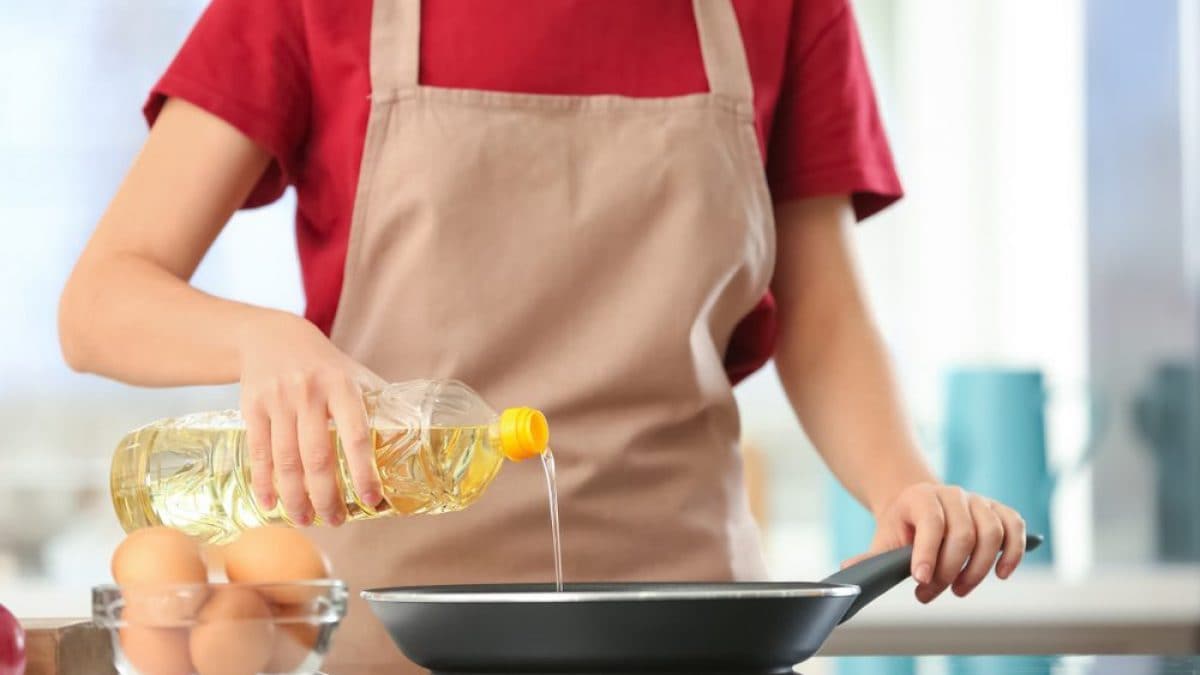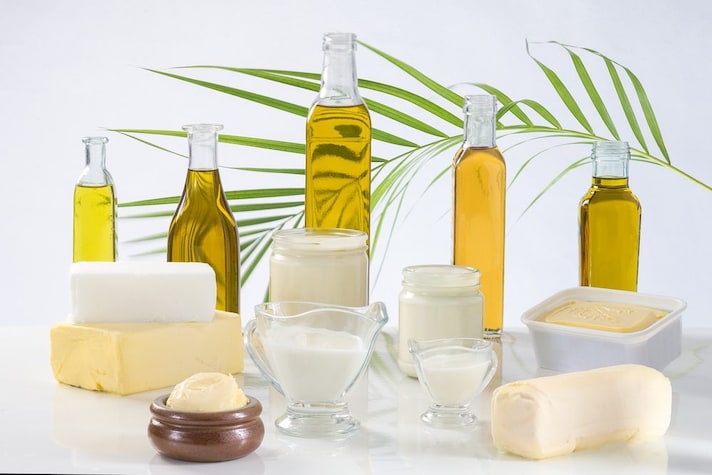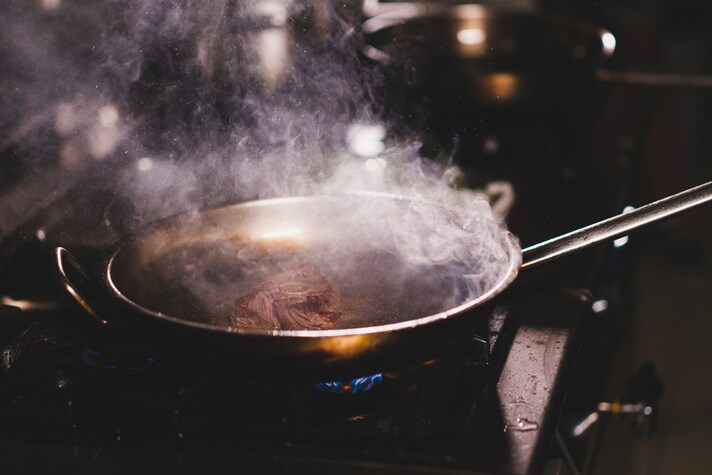
Extra virgin olive oil, butter, seed oil or lard: when we are about to choose a fat for cooking, the flavor is not the only factor to consider. In addition to the division between animal and vegetable fats, to choose the best oil or fat to use, a key element to consider is its smoke point, but it is not the only one. Whether it is a crispy fry, a nice baked dessert or a sauté of vegetables, here are the main cooking fats in relation to their smoke point, their stability and the most suitable uses.
What is Smoke Point?
The smoke point of a cooking fat is the temperature at which it begins to degrade and release volatile substances visible in the form of smoke. The process is called thermolysis and begins with the breakdown of fat molecules: during the process, free fatty acids, volatile compounds and, in some cases, acrolein, a substance toxic to humans, are released. To choose the fat to use in cooking, knowing its smoke point is very important, especially for high-temperature cooking such as baking or frying.

What happens if you exceed the smoke point of fat during cooking? In addition to stimulating the formation of harmful compounds such as acrolein, which can have negative effects on health, exceeding the smoke point can give the dish a bitter taste: for example, during frying, when an oil exceeds its smoke point, the fat begins to burn and generate dense smoke, making the food unpleasant as well as harmful.
The smoke point is an indicator and is not "set": in addition to the type of fat, other factors also influence it, such as the cooking duration, the presence of other ingredients and the type of pan or pot used.

Why Smoking Point Isn't The Only Factor
Knowing what the smoke point is is important, but it is not the only factor on which to base a decision: there are in fact fats that, due to their composition, despite having a high smoke point, are not suitable for heating because their components degrade quickly. In addition to the smoke point, in fact, the stability factor comes into play, or their ability to resist degradation when heated to high temperatures. These are fats that do not decompose easily and do not produce harmful compounds even when brought to high temperatures.
What influences the stability of an oil or fat? There are several factors:
- Type of fat. Saturated fats tend to be more stable, while monounsaturated fats have a lower stability, while polyunsaturated fats have a very low stability (especially omega-3 fatty acids).
- Level of refinement. Refined fats are usually more stable due to the removal of impurities, while unrefined fats are less stable.
- Presence of antioxidants. Natural or added antioxidants improve fat stability.
Examples of oils and fats with high stability at high temperatures are: extra virgin olive oil, peanut oil, ghee, lard, but also coconut oil and palm oil. On the contrary, oils and fats with low stability at high temperatures are linseed oil, hemp seed oil, chi seed oil, but also unrefined extra virgin olive oil.
- Butter has a smoke point of 300-320°F/150-160°C and is, therefore, suited for doughs, pan cooking, sauces and raw usage;
- Ghee has a smoke point of 480°F/250°C and is, therefore, suited for frying, pan-frying, sauces and baking desserts;
- Extra virgin coconut oil has a smoke point of 445°F/230°C and is, therefore, suited for making doughs, baking and frying;
- Rice oil has a smoke point of 465-500°F/240-260°C and is, therefore, suited for being used raw and for pan-frying;
- High oleic peanut seed oil has a smoke point of 360-430°F/180-220°C and is, therefore, suited for frying, pan cooking, baking, making doughs and sauces;
- Peanut oil has a smoke point of 430-445°F/220-230°C and is, therefore, suited for frying, pan cooking, baking, making doughs and sauces;
- Sunflower seed oil has a smoke point of 430°F/220°C and is, therefore, suited for frying, pan cooking and baking;
- Flaxseed oil has a smoke point of 230°F/110°C and is, therefore, suited for being used raw;
- Soybean oil has a smoke point of 430°F/220°C and is, therefore, suited for pan-frying, making sauces and being used raw;
- Extra virgin olive oil has a smoke point of 430-465°F/220-240°C and is, therefore, suited for frying, making sauces and desserts and being used raw;
- Lard has a smoke point of 410°F/210°C and is, therefore, suited for frying, kneading and baking.
;Resize,width=767;)
